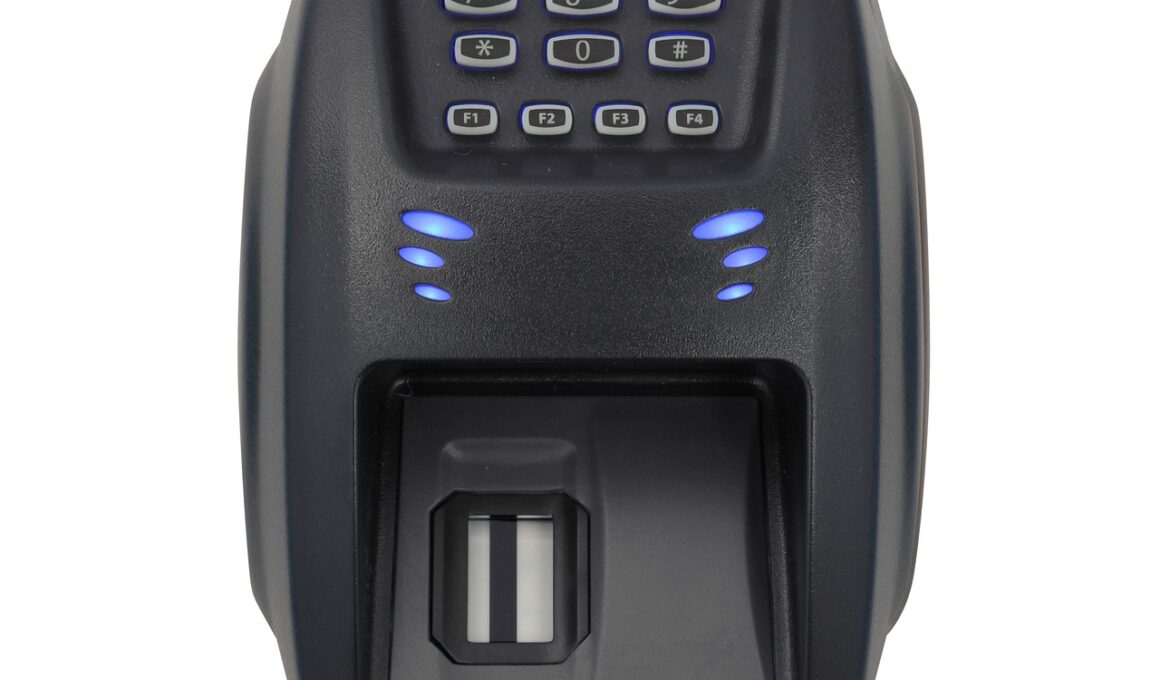Measuring Confidence Levels in Athletes Using Biometric Data
Understanding confidence levels in athletes is critical for enhancing performance in competitive sports. Coaches and sports psychologists increasingly recognize that psychology plays a vital role in athletic success. Biometric data offers measurable insights into an athlete’s physiological responses, which, when analyzed correctly, can reveal the underlying confidence levels. By monitoring various variables like heart rate, cortisol levels, and galvanic skin response, coaches can assess states of anxiety and confidence. This approach allows the creation of more individualized training and mental preparation techniques. While traditional assessments like self-reported questionnaires have value, they are subjective and often unreliable. With biometric analysis, data becomes more objective, enabling real-time monitoring. Athletic performance can be correlated with these biometric indicators, providing an edge over competitors. Developing a deeper understanding through advanced analytics can enhance not only training programs but also recovery strategies. In this way, the incorporation of sports psychology insights backed by solid data will benefit long-term athlete development. A holistic perspective combining both mental and physical facets ensures athletes maximize their peak performance during critical events.
Coaches can implement biometric measurements in various ways to enhance athlete confidence. One effective method is the use of wearable technology that tracks heart rate variability and stress levels during practice sessions. By identifying trends in biometric data, coaches can tailor motivational strategies to better suit individual athletes. This personalized approach allows for engagement with athletes on a deeper psychological level. For instance, athletes exhibiting high stress or low confidence can benefit from targeted mental exercises that promote a positive mindset. Incorporating relaxation techniques such as deep breathing or visualization, confirmed by data analysis, fosters a supportive atmosphere. Another strategy involves analyzing performance data alongside biometric measures to determine optimal training loads. When athletes understand their bodies and how they respond to stress, confidence in competition often rises significantly. Moreover, data derived from recovery metrics ensures athletes do not overtrain or become fatigued, further solidifying their sense of preparedness. Increased confidence levels contribute positively to overall performance, leading to success in competitions. Ultimately, utilizing biometric data not only cultivates confidence in athletes but also functions as a crucial tool for coaches in preparing their teams.
Further Understanding Athlete Confidence
Confidence is a multifaceted construct, especially when it comes to its influence on athlete performance. By combining biometric data with traditional psychological assessments, sports professionals can gain a comprehensive understanding of each athlete’s state. The impact of environmental factors should also be considered; for instance, the confidence levels of athletes performing in front of large crowds may fluctuate compared to training scenarios. Analyzing performance in diverse situations gives insight into potential trigger points affecting confidence. Research indicates a direct correlation between low confidence levels and performance anxiety, emphasizing the need for effective management strategies. Sports psychologists advocate for techniques such as goal setting, self-affirmation, and reflective practices to combat negative thought patterns. Biometric measures serve as a valuable feedback tool during these practices. When athletes monitor their stress levels before competitions, they can implement coping strategies ahead of time. Similarly, techniques that focus on fostering a growth mindset can empower athletes to view challenges as opportunities. This shift, backed by biometric data analysis, can greatly enhance feelings of self-efficacy and consequently, athletic performance. The dynamic interplay between cognition and physiology opens numerous avenues for research and practical application.
Moreover, the psychological resilience of athletes can also be understood through biometric data insights. Periodically assessing physiological responses under stressors allows sports professionals to develop tailored interventions that enhance resilience. For instance, identifying peak performance zones through heart rate monitoring can guide training intensity levels. This leads to athletes feeling more in control and confident during competitions. Gathering data over time establishes benchmarks, permitting coaches to provide optimal feedback. Recognizing improvement, within the framework of biometric assessments, encourages athletes and boosts their self-esteem. A confident athlete is more willing to push boundaries, resulting in heightened performance levels. Furthermore, using biometric data during recovery phases facilitates optimal recuperation, which is essential for maintaining confidence. Athletes often relate their self-efficacy during competition directly to their perceived state of physical readiness. Incorporating recovery techniques grounded in data analytics helps athletes physically recuperate while maintaining psychological benefits. Therefore, sports psychologists emphasize the importance of integrating physiological monitoring with mental training. Engaging in this dual approach ensures that athletes remain resilient and confident across various performance contexts.
The Role of Analytics in Tracking Progress
The emergence of advanced analytics in sports has transformed how athletes and coaches view performance metrics. By shifting the focus from pure statistics to biometric measures, vital insights emerge regarding confidence levels. Analytics allow coaches to track progress not just in skills but also in mental states through biometric feedback. Data visualization tools provide a clearer picture of how confidence and physiological responses evolve over time. Coaches can identify patterns in an athlete’s biometrics that correlate with high-performance periods. Such insights empower athletes by highlighting their strengths, thus fostering self-belief. Utilizing analytics, teams can also simulate pressure environments during training. Biometric data during these simulations gives valuable feedback about an athlete’s confidence under stress. This real-time evaluation is crucial for facilitating mental adaptation strategies that athletes can employ when facing competitive challenges. As data becomes more sophisticated, the integration of AI and machine learning can predict confidence trajectories based on historical data exponentially. The convergence of analytics, combined with traditional psychological methods, allows for a refined understanding of confidence management in athletes, ultimately promoting consistent peak performance.
Ultimately, technology will continue to evolve, providing even greater insights into psychological aspects of athlete performance. Emerging tools, such as advanced biometric wearables, are pushing the boundaries of sports analytics. These devices not only measure traditional metrics but also capture emotional and cognitive states, offering a more comprehensive view of athlete well-being. Additionally, integrating artificial intelligence within these analytics frameworks provides anticipatory feedback that can lead to proactive confidence-building strategies. Coaches will be able to adjust training regimens dynamically based on real-time biometric data. This ensures that athletes are always working within optimal performance zones. As the dialogue between technology and sports psychology deepens, the myth of the ‘natural athlete’ will evolve. Through data-driven insights, all athletes can cultivate skills to enhance confidence systematically. By applying a rigorous and analytical mindset to athlete development, sports professionals can literally shape the future of sports performance. In conclusion, the intersection of biometric data and sports psychology is pivotal in developing confident athletes, leading to sustained competitive excellence.
The commitment to understanding the psychology of sport will influence future practices profoundly. Training sports professionals to interpret and apply biometric data effectively requires significant investment in education and resources. Universities and sports organizations must prioritize integrating psychology and analytics in their curriculums. Conducting workshops and developing certification programs on the importance of biometric analysis can drive innovation. As these programs become accessible, they will attract a new generation of sports professionals eager to leverage technology. Moreover, fostering collaboration between data scientists and sports psychologists will yield a holistic understanding of athlete training. By defining measurable outcomes for confidence levels through biometric metrics, stakeholders can set actionable benchmarks. Tracking progress in athlete confidence can significantly influence developmental paradigms across various sports. Utilizing both quantitative and qualitative data empowers decision-makers to adopt comprehensive training methods. Thus, ensuring athlete development is both psychologically sound and data-driven is crucial. In conclusion, measuring confidence levels in athletes using biometric data is not merely an academic interest; it is an ongoing evolution. The marriage of sports psychology and analytics propels athletic performance to new heights and ensures future success.


